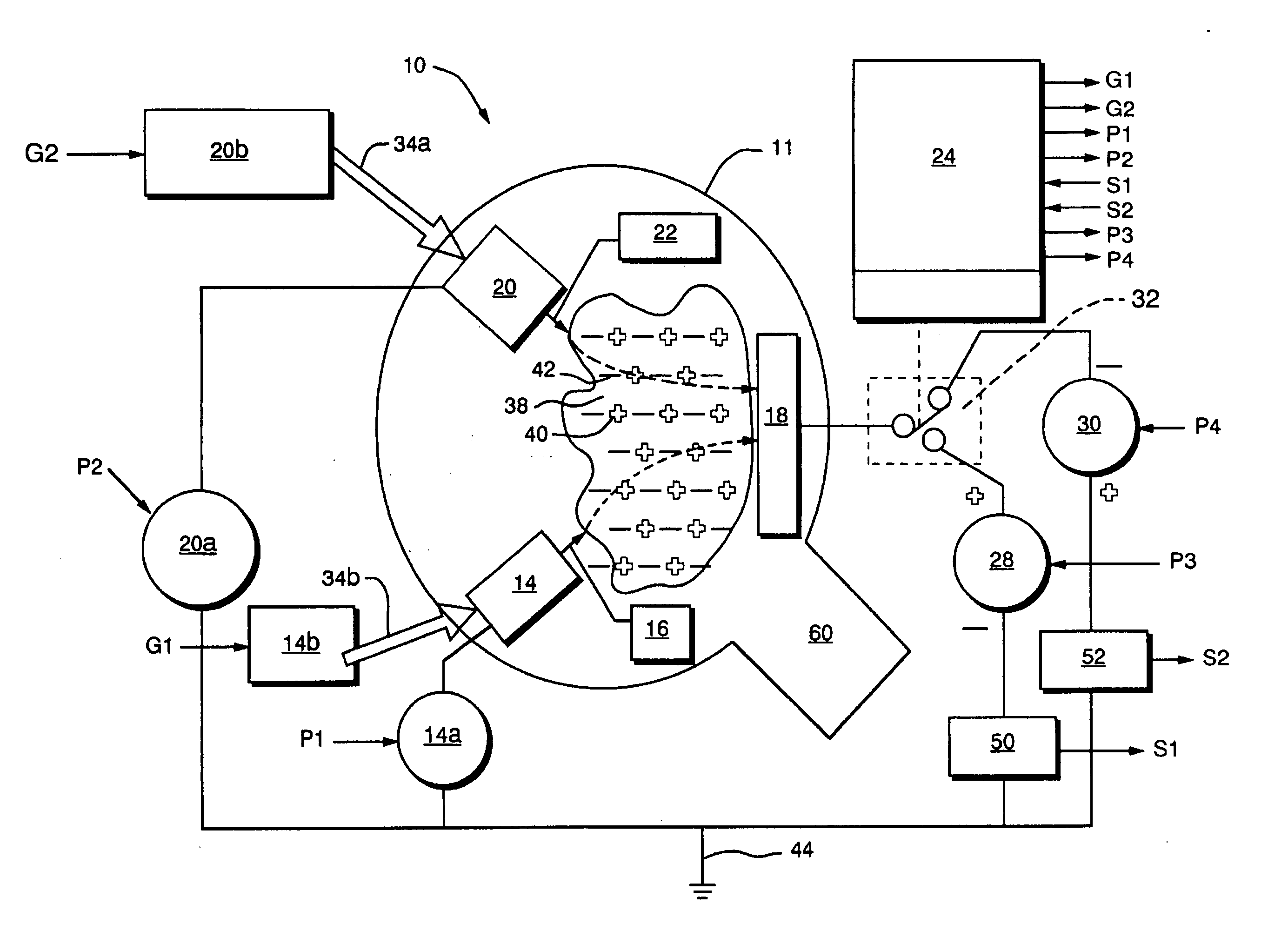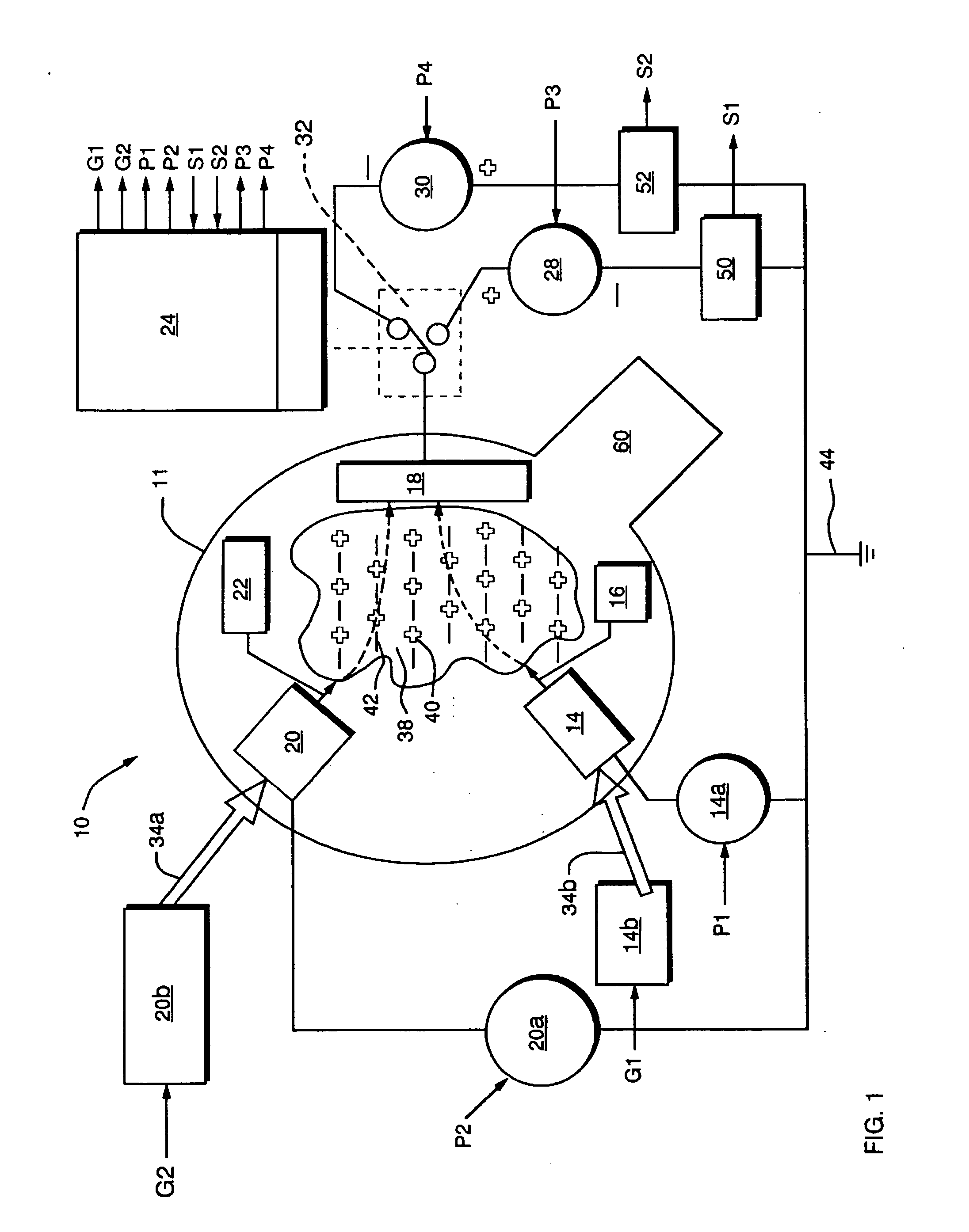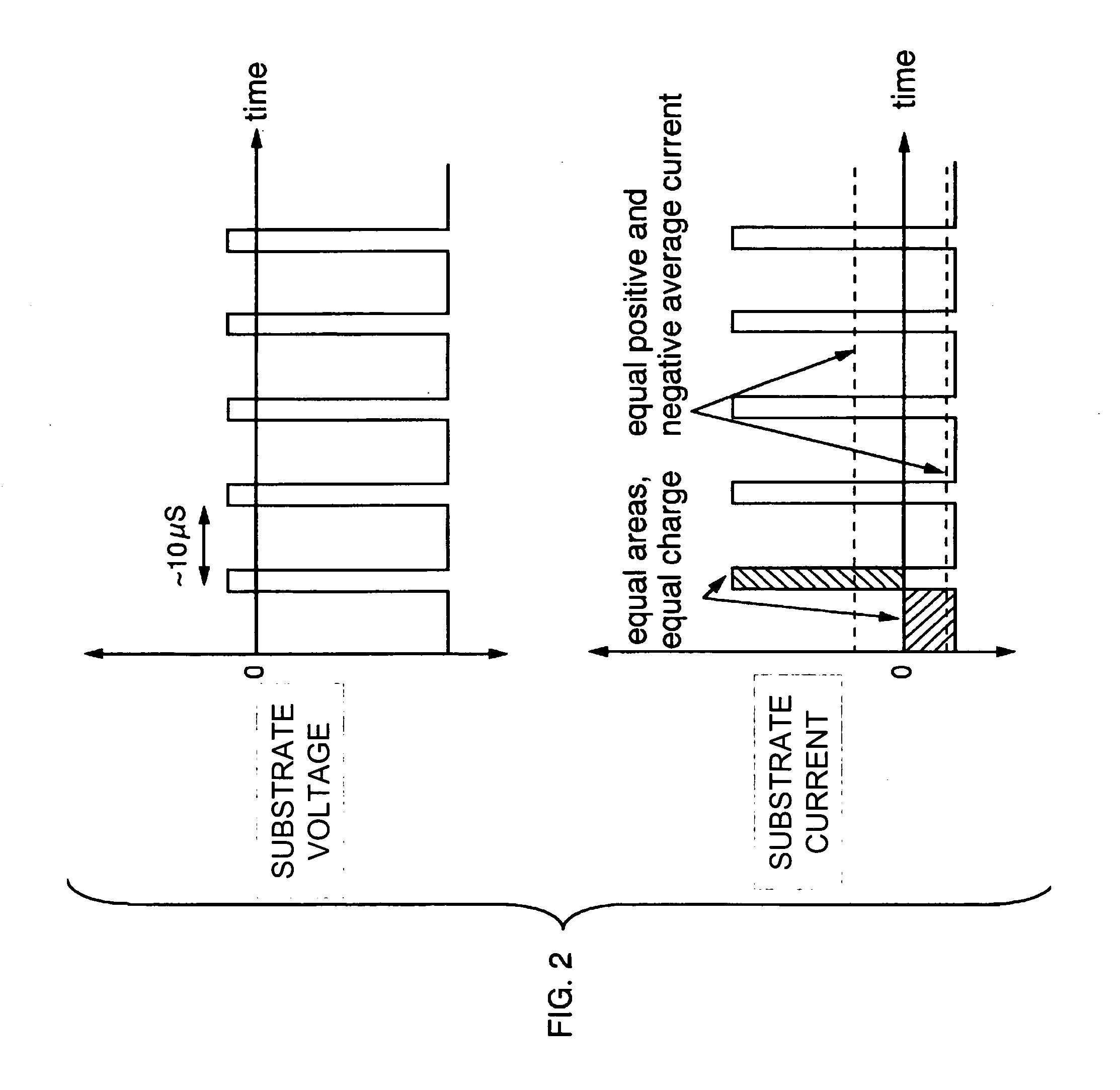System and method for performing sputter etching using independent ion and electron sources and a substrate biased with an a-symmetric bi-polar DC pulse signal
a sputter etching and independent ion and electron source technology, applied in the direction of electrolysis components, vacuum evaporation coatings, coatings, etc., can solve the problems of limiting the control of ion energies at the etched surface, high gas pressure, and low electrode voltage, so as to optimize the etching performance
- Summary
- Abstract
- Description
- Claims
- Application Information
AI Technical Summary
Benefits of technology
Problems solved by technology
Method used
Image
Examples
Embodiment Construction
There is shown in FIG. 1, a system 10 for performing sputter etching for removal of material from substrate 18. System 10 comprises an ion source 14 that generates an ion current 16. The ion current 16 is directed primarily at substrate 18. System 10 further comprises an electron source 20 that generates an electron current 22. The electron current 22 is directed at the substrate 18. The ion source 14, the electron source 20 and the substrate 18 are disposed in a chamber 11. A vacuum pump 13 reduces the pressure within the chamber 11. The pressure within the chamber 11 during operation is about 10−3 to 10−5 torr.
Exemplary ion sources 14 useful for implementing the present invention include end-Hall or closed drift Hall ion sources such as the Mark II™ source of Commonwealth Scientific Corp / Veeco Instruments and the EH-1000 source of Kaufman & Robinson, Inc. Exemplary electron sources 20 useful for implementing the present invention include hollow cathode electron sources such Com...
PUM
| Property | Measurement | Unit |
|---|---|---|
| electrode voltages | aaaaa | aaaaa |
| DC voltage | aaaaa | aaaaa |
| DC voltage | aaaaa | aaaaa |
Abstract
Description
Claims
Application Information
 Login to View More
Login to View More - R&D
- Intellectual Property
- Life Sciences
- Materials
- Tech Scout
- Unparalleled Data Quality
- Higher Quality Content
- 60% Fewer Hallucinations
Browse by: Latest US Patents, China's latest patents, Technical Efficacy Thesaurus, Application Domain, Technology Topic, Popular Technical Reports.
© 2025 PatSnap. All rights reserved.Legal|Privacy policy|Modern Slavery Act Transparency Statement|Sitemap|About US| Contact US: help@patsnap.com



